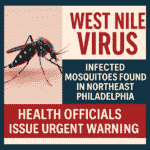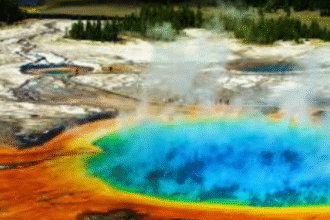The word “Yellowstone” often evokes images of breathtaking geysers, lush forests, and abundant wildlife. But hidden beneath this serene beauty lies one of the most powerful and closely monitored natural features on Earth — the Yellowstone supervolcano. While no eruption has occurred in over 70,000 years, the possibility of a future Yellowstone eruption continues to intrigue scientists and alarm the public.
This article explores what the Yellowstone supervolcano is, its past eruptions, what a future eruption might look like, and whether there is any cause for concern today.
What Is the Yellowstone Supervolcano?
Yellowstone National Park, spanning parts of Wyoming, Montana, and Idaho, sits atop a supervolcano — a massive, underground reservoir of magma capable of producing cataclysmic eruptions. It’s not your average volcano with a classic cone-shaped peak; instead, it is a caldera, a giant crater formed by past explosive eruptions.
The Yellowstone Caldera is approximately 30 miles wide and was formed during the last supereruption around 640,000 years ago. This vast volcanic system is powered by a hotspot — a plume of hot material rising from deep within the Earth’s mantle.
A History of Massive Eruptions
The Yellowstone supervolcano has erupted three times in the last 2.1 million years:
- Huckleberry Ridge Eruption (2.1 million years ago) – The largest eruption, forming the Island Park Caldera.
- Mesa Falls Eruption (1.3 million years ago) – A smaller yet still powerful eruption.
- Lava Creek Eruption (640,000 years ago) – The most recent major eruption, forming the Yellowstone Caldera.
These eruptions were thousands of times more powerful than typical volcanic events, ejecting hundreds of cubic miles of volcanic ash and altering global climate patterns.
Is Yellowstone Going to Erupt Soon?
Despite sensational headlines and viral doomsday theories, there is currently no indication that Yellowstone is about to erupt.
According to the United States Geological Survey (USGS) and the Yellowstone Volcano Observatory (YVO), the volcano remains under constant surveillance through a network of seismometers, GPS stations, and gas sensors. These instruments track:
- Earthquake activity (Yellowstone sees 1,000–3,000 small quakes per year)
- Ground deformation
- Thermal and gas emissions
While these signals occasionally fluctuate, no current patterns suggest magma is rising toward the surface. Experts agree that an eruption is highly unlikely in the near future.
What Would a Future Eruption Look Like?
If a major Yellowstone eruption were to occur, it could have devastating global consequences:
- Local devastation: Everything within 100 miles could be obliterated.
- Ash fallout: Ash clouds could blanket parts of the U.S., disrupting air travel, agriculture, and infrastructure.
- Climate impact: The eruption could inject large amounts of sulfur dioxide into the atmosphere, leading to temporary global cooling — similar to a “volcanic winter.”
However, the most likely future activity at Yellowstone would be small hydrothermal explosions, lava flows, or minor ash emissions — not a cataclysmic supereruption.
What’s Being Done?
The USGS, in partnership with universities and global scientists, monitors Yellowstone 24/7. Public alerts are maintained via the Volcano Alert Level System, and educational efforts aim to separate fact from fear-mongering.
The current alert level at Yellowstone remains “normal.”
The idea of a Yellowstone eruption understandably stirs public anxiety, fueled by movies, headlines, and viral videos. But the reality is far more nuanced. While Yellowstone is indeed one of the planet’s largest and most studied volcanic systems, science offers reassurance — there is no evidence of an impending eruption.
Yellowstone remains a geologic wonder and a vital research site, not an imminent disaster. As long as science and public awareness continue to evolve together, we can admire this natural marvel while understanding the forces that shape it beneath the surface.






